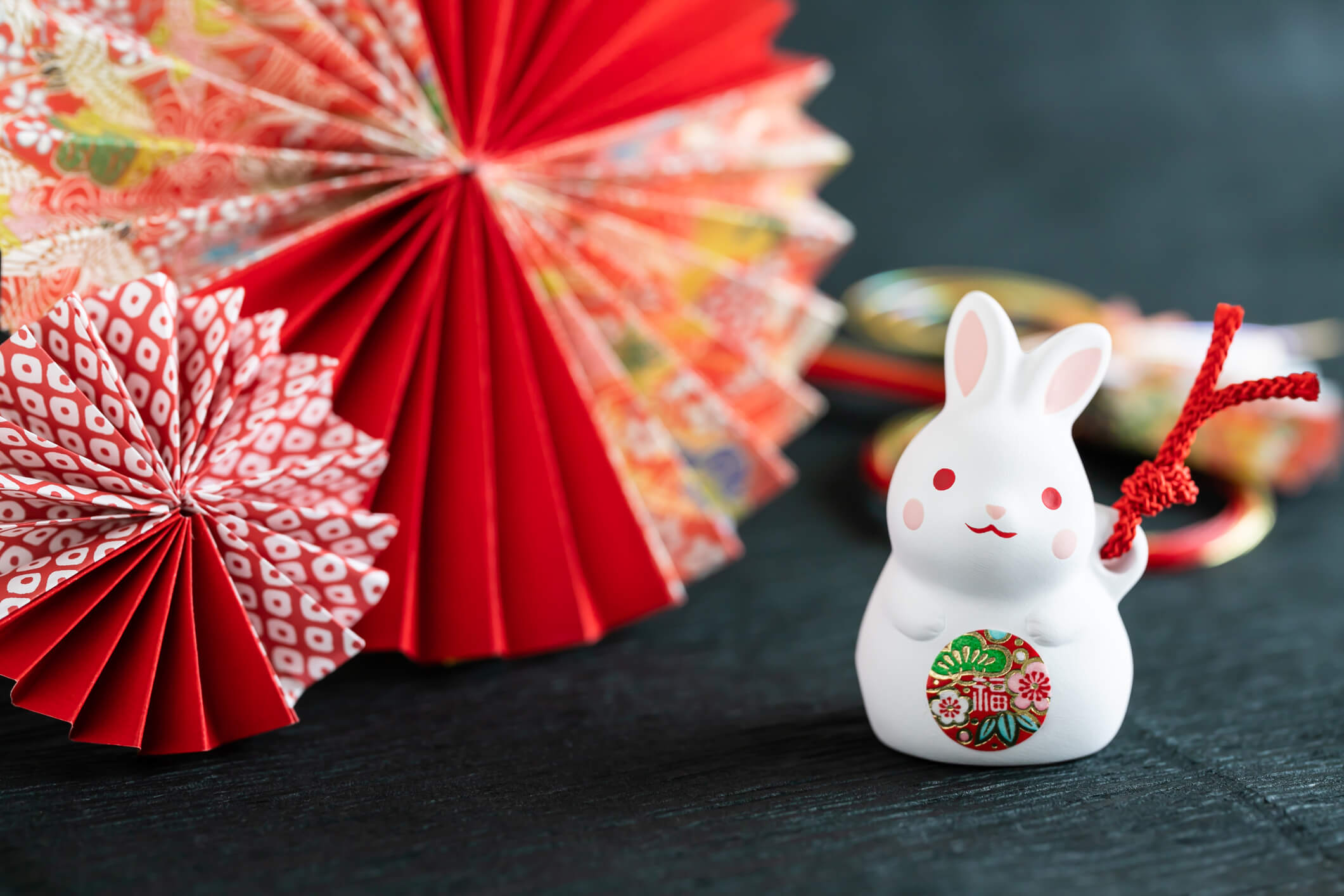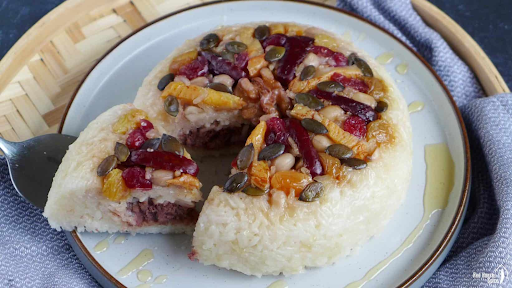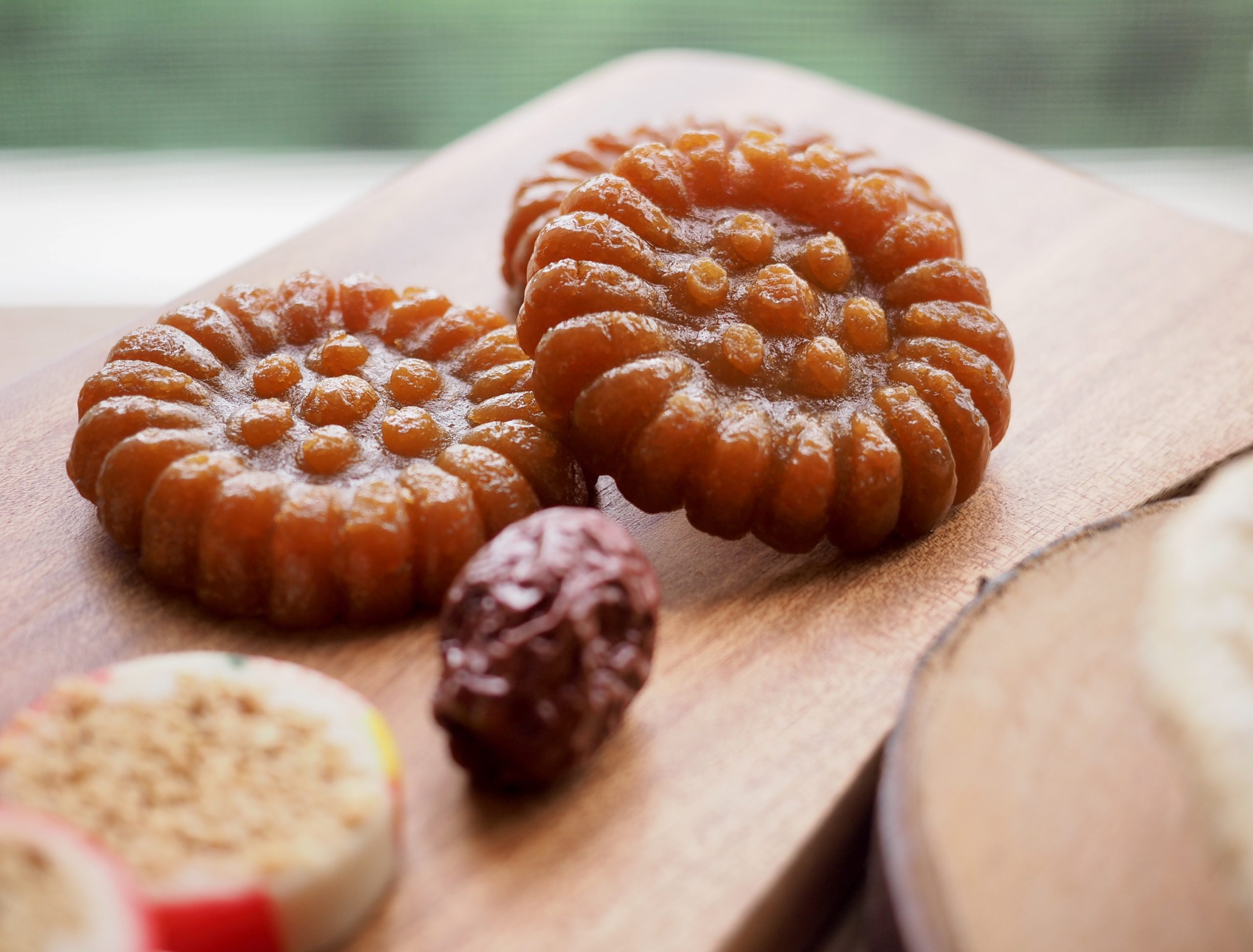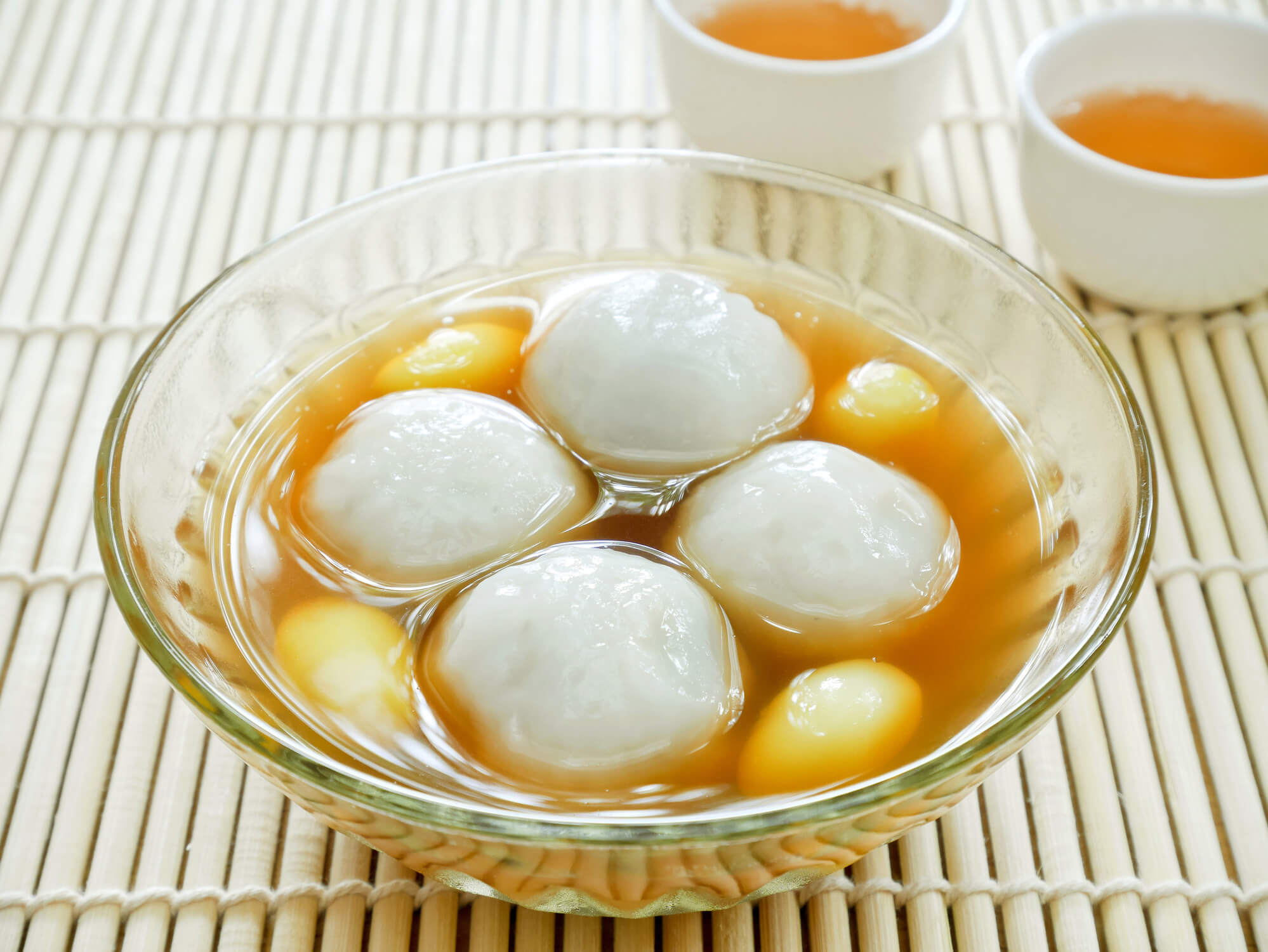Lunar New Year Desserts to Celebrate the Year of the Rabbit
We’re entering the Lunar New Year of the rabbit… What a better way to celebrate with New Year desserts! What can you expect in this new year? Look for big changes, adventures and social progress. Since the new year dinner is the most important meal of the year in Asia, make sure to savour and enjoy its desserts!

Lunar New Year snacks
What is the Lunar New Year?
The New Year is celebrated during the second new moon after the Winter Solstice. It symbolizes the end of winter and the start of spring. In 2023, it will be held on Sunday, January 22nd.
According to the Chinese Zodiac, 2023 is the year of the rabbit. If you were born in 1926, 1938, 1950, 1962, 1974, 1986, 1998 or 2010, you’re born in the year of the rabbit! You are someone who is courageous, ambitious, generous and competitive. Make the most of this year and pursue your goals!

Year of the Rabbit
Let’s explore the new year desserts
The Lunar New Year is celebrated in various Asian countries, including China, Japan, Korea, Vietnam, Tibet, and Mongolia. The festivities are connected to the traditional lunisolar calendar of China. Even though they share the same Chinese calendar, each country has their own unique celebrations and traditions. Let’s explore the various desserts!

Eight Treasure Rice Pudding (Yuan’s Garden Restaurant)
1. China
The Lunar New Year is the biggest celebration in China. Let’s explore the different Chinese new year desserts enjoyed during this time of the year.
-
-
-
- Eight Treasure Rice Pudding (Ba Bao Fan): This is a sweet and sticky rice pudding. It is made with glutinous rice and topped with eight different fruits and nuts. The number eight is significant in the Chinese traditions and culture, as it symbolizes wealth and prosperity.
-
-
-
-
-
- Sesame Seed Balls: Sesame seed balls are enjoyed throughout the year, but especially during New Year celebrations. They are made out of glutinous rice flour, creating a chewy consistency. They represent good luck because of its round shape and golden colour. When frying, the sesame seed balls enlarge in size, which also symbolizes growth.
-
-
-
-
-
- Chinese New Year Treasure Rice Cakes (Nian Gao): This is the most popular and beloved Chinese New Year dessert. According to Chinese folklore, families offer cake to Zao Shen, the Chinese Kitchen God. During the New Year period, Zao Shen goes back to Heaven to report back to the Jade Emperor. The offerings encourage Zao Shen to put a good word on behalf of the family. “Gao” translates to tall or high, representing prosperity and success. Parents would motivate their kids to eat Nian Gao to help them grow taller.
-
-
-
-
-
- Chinese Almond Cookies: For a more light, yet crispy Chinese New Year dessert, Chinese almond cookies are the way to go! Made with almond meal, these cookies have the perfect balance of sweetness and brickle consistency. They are coated with almonds for a more nutty flavour. These cookies symbolizes coins, which will bring in good fortune!
-
-

Rabbit Wagashi (Kyoto Toraya)
2. Japan
The Lunar New Year isn’t exactly a holiday in Japan, but it is still celebrated! Though, do not confuse the festivities with the Japanese New Year.
-
-
-
- Wagashi: Wagashi (traditional Japanese sweets) are served during the Nnew Yyear in Japan. Japanese bakeries will make wagashi in the shape of the Chinese zodiac animal of that year. Wagashi is made out of plant-based ingredients and is typically served with green tea.
-
-

Yakgwa
3. Korea
In Korea, Chuseok (Lunar New Year) is also based on the Chinese calendar, but they maintain their own unique Korean calendar. Let’s discover the Korean New Year desserts!
-
-
-
- Yakgwa: This is a fried honey cookie, also called gwajul. Yakgwa is prepared with wheat flour, honey, cheongju (rice wine), ginger juice and sesame oil. After deep frying it, it is coated with honey and ginger syrup. It is sweet and has a soft texture. It is enjoyed during Chuseok and other celebrations such as weddings and “hwangap” (the 61st birthday based on the Korean calendar).
-
-
-
-
-
- Yaksik: This is a sweet rice dessert topped with various dried fruits and nuts. It is prepared by steaming glutinous rice with chestnuts, ginkgo nuts and dates. Once done, it is mixed with honey and soy sauce. “Yak” means medicine and “sik” means food. Koreans believe that honey brings a lot of health benefits, so any food with honey will keep your heart strong!
-
-
-
-
-
- Dasik: These are tea cookies. They’re so light that they are known to instantly melt in your mouth. Not only are they sweet, they’re also gluten free! During the Goryeo and Silla Dynasty, dasik were only enjoyed by the aristocrats and the royal families.
-
-

Glutinous Rice Balls in Ginger Syrup
4. Vietnam
The Vietnamese Lunar New Year is called Tết, which is short for Tết Nguyên Đán. Curious to know about Vietnamese New Year desserts? Let’s find out!
-
-
-
- Glutinous Rice Balls in Ginger Syrup (Chè Trôi Nước): This is a well-loved Vietnamese dessert made out of glutinous rice with mung bean topped with sesame seeds. It is poured over with warm ginger syrup and coconut sauce. ”Chè Trôi Nước” translates to “floating dessert in water”. It is the perfect dessert to welcome the beginning of spring. As part of the Buddhist tradition and ritual, small bowls with 3-5 balls are offered to ancestors.
-
-
-
-
-
- Chewy Ginger Peanut Sesame Candy (Kẹo Mè Xửng): This is a Vietnamese New Year candy prepared with peanuts and sesame seeds. This treat is enjoyed throughout the year, but especially during Tết. During the New Year, it’s commonly served alongside “Mứt Tết”, which is a tray of various dried, candied fruits, veggies and nuts. This platter is used as an offering to the Vietnamese ancestors. Kẹo mè xửng is both chewy and crunchy. It tastes sweet due to the use of palm sugar.
-
-
-
-
-
- Red Sticky Rice (Xôi Gấc): This Vietnamese dessert is made out of glutinous rice mixed in with coconut milk. The main star of this treat is the fruit “Gấc”. It is a native fruit in Vietnam. Its dark colour seeds and red arils gives the fruit its signature red look. This dessert is not super sweet, but enough to satisfy your cravings. The colour red embodies the symbol of good fortune, which is why it is served during the new year, and other occasions like engagements and weddings.
-
-

Tibetan cookie (Khapse)
5. Tibet
Unlike other Asian countries, Losar (Tibetan New Year) will be celebrated on March 3rd this year. The date varies from the Chinese solar calendar.
-
-
-
- Tibetan cookie (Khapse): Khapse (translating to “mouth-eat”) is similar to cookies. It is commonly served during Losar. This dessert is a deep-fried pastry, which is braided and folded into symbolic shapes. The first mould is shaped into a scorpion, which is used as an offering to attract good luck. Afterwards, they shape the dough into donkey ears and lotus flowers (both are large khapses), which are served on the Losar altar. The smaller khapses are enjoyed for snacking and sharing with loved ones, paired with sweet tea.
-
-

6. Mongolia
-
-
-
- Milk Tea: Right before the sun rises on the first day of Tsagaan Sar, Mongolians make traditional salted milk tea to offer the very first cup to the earth and sky. This milk tea is a popular drink in Mongolia, served at any time of the day and season. The Tsagaan Sar festivities begin with salted milk tea, served in a silver bowl.
-
-
-
-
-
- Berees: This the second dish that is served during Tsagaan Sar. Berees is prepared with steamed rice topped with raisins. To add a sweet taste, sugar is mixed with yak ghee (clarified butter). A serving of this dessert consists of 2-3 spoonfuls of berees inside your slated milk tea.
-
-
-
-
-
- Tavgyn Idee: You will find this dessert right in the center of the dinner table. Tavgyn Idee is basically thick pastries stacked in odd numbers. It is beautifully topped with various candies. The thick pastry is called UI Boov (Sole Cake). They must be piled in odd numbers to represent the life cycle: happiness and suffering. The first layer represents happiness, and despite going through sadness, it will always end in happiness.
-
-
-
-
-
- Tsagaalga: What comes after milk tea? Tsagaalga! Since the use of dairy is very important during the Mongolian Nnew Yyear festivities, this drink is not exempt. It is made out of flour, milk, curd, milk ghee, steamed rice and with a bit of sugar. To serve Tsagaalga, the receiver must hold it with two hands. Traditions say that if you drink at least three bowls of Tsagaalga, you will have an abundance of wealth for the rest of the year.
-
-




